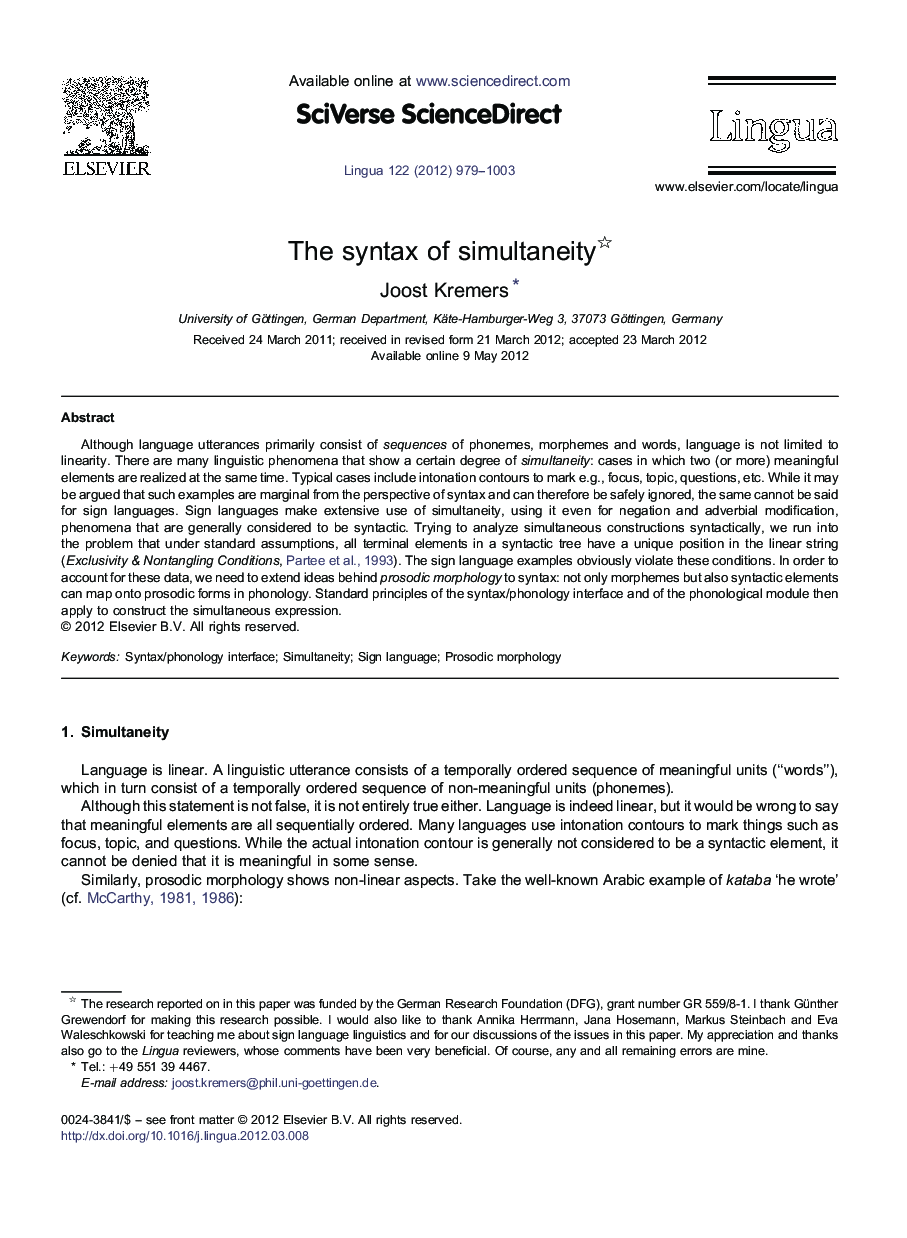| کد مقاله | کد نشریه | سال انتشار | مقاله انگلیسی | نسخه تمام متن |
|---|---|---|---|---|
| 935779 | 923922 | 2012 | 25 صفحه PDF | دانلود رایگان |

Although language utterances primarily consist of sequences of phonemes, morphemes and words, language is not limited to linearity. There are many linguistic phenomena that show a certain degree of simultaneity: cases in which two (or more) meaningful elements are realized at the same time. Typical cases include intonation contours to mark e.g., focus, topic, questions, etc. While it may be argued that such examples are marginal from the perspective of syntax and can therefore be safely ignored, the same cannot be said for sign languages. Sign languages make extensive use of simultaneity, using it even for negation and adverbial modification, phenomena that are generally considered to be syntactic. Trying to analyze simultaneous constructions syntactically, we run into the problem that under standard assumptions, all terminal elements in a syntactic tree have a unique position in the linear string (Exclusivity & Nontangling Conditions, Partee et al., 1993). The sign language examples obviously violate these conditions. In order to account for these data, we need to extend ideas behind prosodic morphology to syntax: not only morphemes but also syntactic elements can map onto prosodic forms in phonology. Standard principles of the syntax/phonology interface and of the phonological module then apply to construct the simultaneous expression.
► Languages are essentially linear, but they also show simultaneity effects.
► Simultaneity is especially prevalent in sign languages.
► Standard syntactic theories are ill-equipped to handle simultaneity.
► By extending ideas from prosodic morphology to syntax, simultaneity can be handled.
Journal: Lingua - Volume 122, Issue 9, July 2012, Pages 979–1003